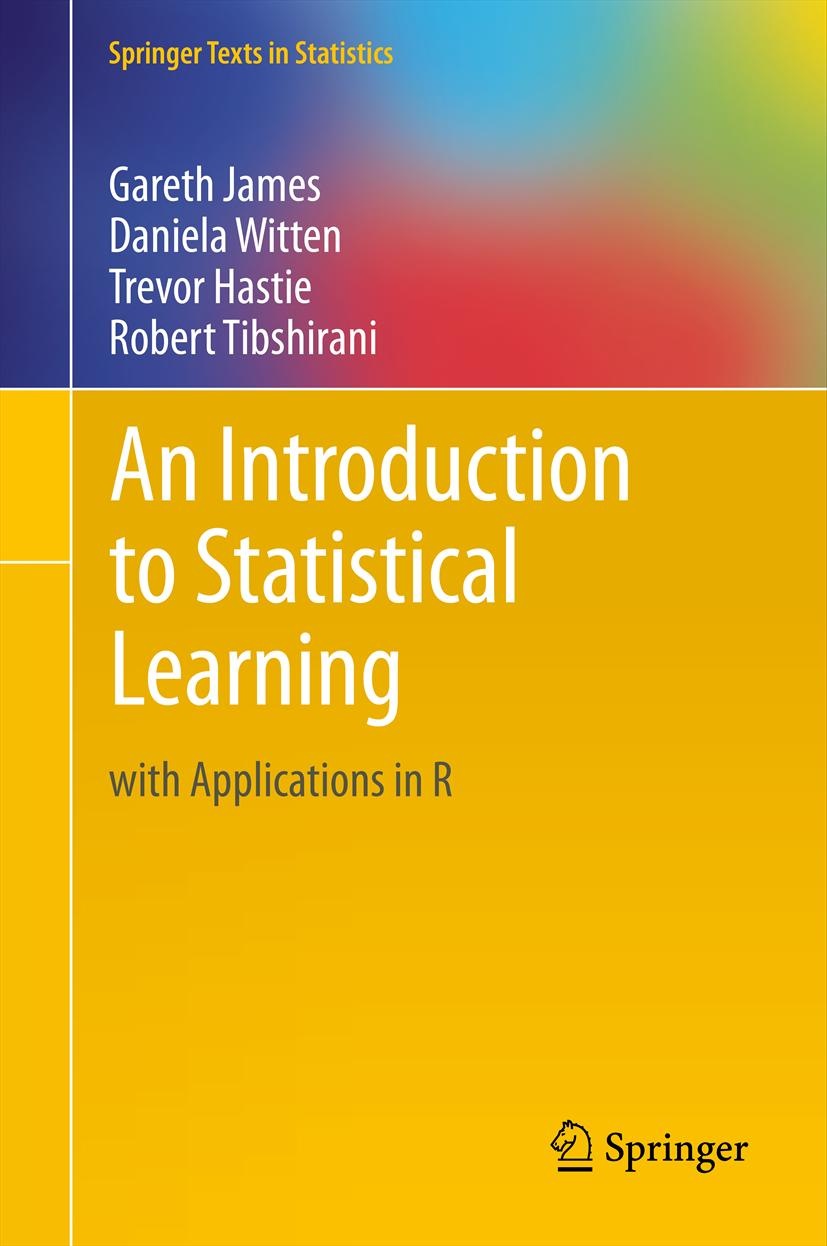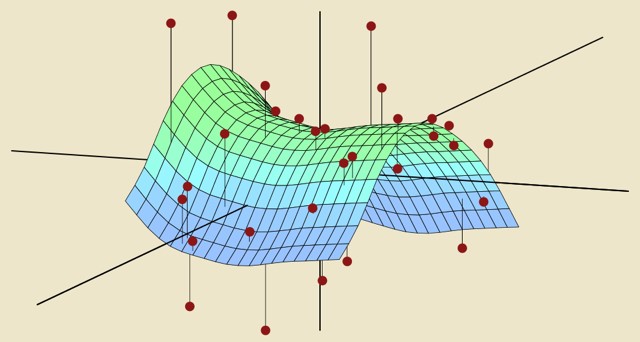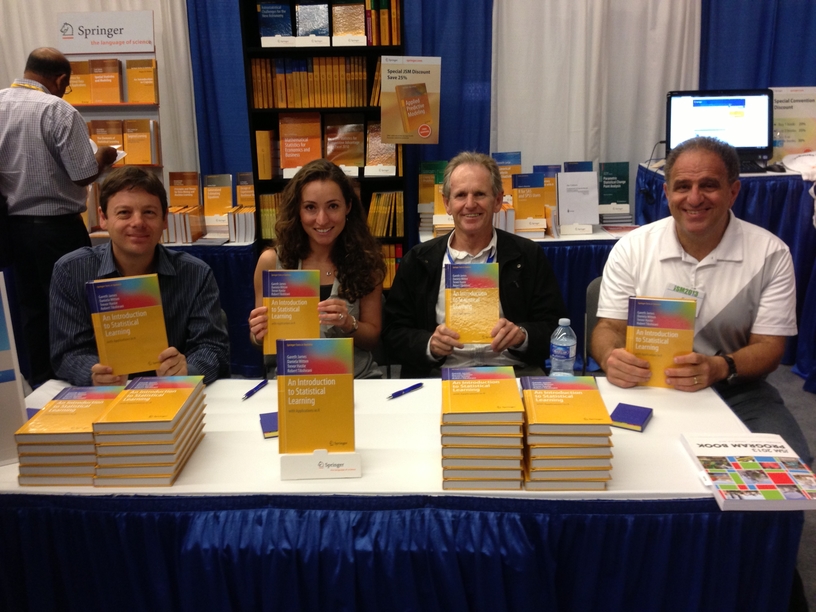
(corrected 7th printing)

Statistical Learning MOOC covering the entire ISL book offered by Trevor
Hastie and Rob Tibshirani.
An Introduction to Statistical Learning
with Applications in R
Gareth James, Daniela Witten, Trevor Hastie and Robert Tibshirani
| Home |
 |
Download the book PDF (corrected 7th printing) 
Statistical Learning MOOC covering the entire ISL book offered by Trevor
Hastie and Rob Tibshirani. |
| About this Book | ||
| R Code for Labs | ||
| Data Sets and Figures | ||
| ISLR Package | ||
| Get the Book | ||
| Author Bios | ||
| Errata |
This book
provides an introduction to statistical learning methods. It is aimed for upper
level undergraduate students, masters students and Ph.D. students in the
non-mathematical sciences. The book also contains a number of R labs with
detailed explanations on how to implement the various methods in real life
settings, and should be a valuable resource for a practicing data scientist.
For a more advanced treatment of these topics: The Elements of Statistical Learning.
Slides and videos for Statistical Learning MOOC by Hastie and Tibshirani available separately here. Here is an additional link to a zipped version StatLearningSlides.zip of the slides.
Slides and video tutorials related to this book by Abass Al Sharif can be downloaded here.
"An Introduction to Statistical Learning (ISL)" by James, Witten, Hastie and Tibshirani is the "how to'' manual for statistical learning. Inspired by "The Elements of Statistical Learning'' (Hastie, Tibshirani and Friedman), this book provides clear and intuitive guidance on how to implement cutting edge statistical and machine learning methods. ISL makes modern methods accessible to a wide audience without requiring a background in Statistics or Computer Science. The authors give precise, practical explanations of what methods are available, and when to use them, including explicit R code. Anyone who wants to intelligently analyze complex data should own this book. Larry Wasserman, Professor, Department of Statistics and Department of Machine Learning, CMU.
As a textbook for an introduction to data science through machine learning, there is much to like about ISLR. It’s thorough, lively, written at level appropriate for undergraduates and usable by nonexperts. It’s chock full of interesting examples of how modern predictive machine learning algorithms work (and don’t work) in a variety of settings." Matthew Richey, The American Mathematical Monthly, Vol. 123, No. 7 (August-September 2016).
"I just wanted to thank you all for the textbook “An Introduction to Statistical Learning” that you have contributed to as authors. As a junior at university, it is by far the most well-written textbook I have ever used, a sentiment mirrored by all my other classmates. One friend, graduating this spring with majors in Math and Data Analytics, cried out in anger that no other textbook had ever come close to the quality of this one. You and your team have turned one of the most technical subjects in my curriculum into an understandable and even enjoyable field to learn about. Every concept is explained simply, every equation justified, and every figure chosen perfectly to clearly illustrate difficult ideas. This is the only textbook I have ever truly enjoyed reading, and I just wanted to thank you and all other contributors for your time and efforts in its production." Cornell Blake, Junior, Ohio State University.
"As a former data scientist, there is no question I get
asked more than, “What is the best way to learn statistics?” I always give the
same answer: Read An Introduction to Statistical Learning. Then, if you finish
that and want more, read The Elements of Statistical Learning. These two books,
written by statistics professors at Stanford University, the University of
Washington, and the University Southern California, are the most intuitive and
relevant books I’ve found on how to do statistics with modern technology.
 |
Linear Regression? I covered that last year. Wake me up when we get to Support Vector Machines! Noah Mackey |
